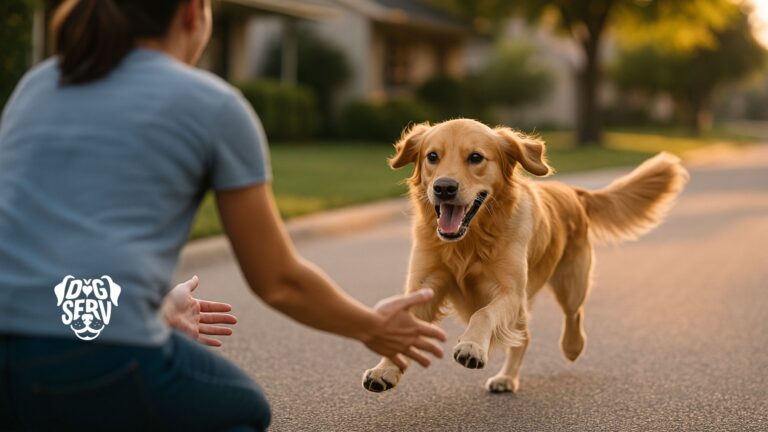10 Signs Your Dog Is in Great Health
Transparency matters to us! This post may include affiliate links, which means we earn a small commission if you make a purchase through our recommendations. This is at no additional cost to you. Read our full affiliate disclosure.
Have you ever watched your dog playing in the backyard and wondered if all that tail wagging and happy energy truly means they’re as healthy as they seem? Most dog parents spend countless hours researching the best food, toys, and care routines, but many struggle to recognize the clear signs that their furry friend is thriving. A dog showing consistent physical and behavioral health indicators is likely in excellent overall condition, yet many owners miss these positive signals while worrying about potential problems. Understanding what optimal canine wellness looks like can transform your daily observations from anxious worry into confident health monitoring. When you know exactly what to look for, those morning stretches, playful barks, and contented sighs become reassuring confirmations that your companion is living their best life.
Key Takeaways
- Physical Health Shows on the Outside: Bright eyes, shiny coats, healthy gums, and proper weight are visible signs of internal wellness that you can observe daily
- Behavior Reflects Mental State: High energy levels, social friendliness, and regular habits indicate strong emotional and psychological well-being
- Regular Monitoring Prevents Problems: Weekly health checks and understanding your dog’s baseline patterns help catch issues before they become serious
- Complete Health Needs Both Body and Mind: True canine wellness requires both physical vitality and behavioral balance working together
- Normal Varies by Individual: Understanding breed-specific and individual differences helps you recognize what’s healthy for your specific dog
- Home Care Works with Professional Care: Regular vet checkups alongside daily observations create the most comprehensive health management approach
Physical Signs of Optimal Canine Health
Your dog’s physical appearance tells a story about their internal health status, much like how you might feel energetic when you’re well-rested and properly nourished. These external indicators serve as your first line of defense in monitoring wellness, since many health issues show up in visible ways before causing obvious discomfort. Regular visual and hands-on assessments become second nature once you understand what healthy looks like, allowing you to spot changes quickly and address them proactively. The beauty of physical health monitoring lies in its simplicity, requiring no special equipment or training, just consistent observation and gentle examination during your regular bonding time.
Eyes: Windows to Health
Bright, clear eyes without discharge, redness, or swelling indicate good health and absence of infection or allergies. Healthy eyes should sparkle with alertness, showing distinct iris colors and transparent corneas that allow you to see clear definition between different eye structures. The whites of the eyes should appear clean without yellowing or excessive blood vessels, while the area around the eyes stays free from crusty buildup or tear staining.
Regular home eye exams can help catch issues like excessive tearing early, which often results from allergies or environmental irritants. Simple daily observations during playtime or petting sessions allow you to notice any changes in clarity, moisture levels, or the presence of unusual discharge. Dogs with healthy eyes typically blink normally and don’t paw at their faces or rub against furniture to relieve irritation.
Coat and Skin: Reflecting Nutritional Status
A shiny, smooth coat texture and supple, blemish-free skin serve as signs of proper nutrition and overall wellness. The coat should feel springy and lustrous when you run your hands through it, bouncing back into place rather than feeling greasy, dry, or brittle. Healthy skin moves freely when gently lifted and appears pink or pigmented according to your dog’s breed characteristics, without rashes, excessive flaking, or unusual growths.
Dull, dry hair or abnormal shedding often points to poor nutrition or underlying health issues, while healthy coats maintain consistent texture and appropriate seasonal shedding patterns. Regular brushing sessions provide perfect opportunities to check for new lumps, bumps, or skin changes while removing dead hair and distributing natural oils. The absence of strong odors, excessive dandruff, or bald patches indicates that your dog’s skin and coat systems are functioning properly.

Ears: Clean and Odor-Free
Light pink, clean ears without excessive wax, odor, or discharge indicate good hygiene and absence of infection. Healthy ears should have a slight amount of protective wax that appears light-colored and doesn’t produce strong smells. The ear flaps should lie naturally without signs of swelling, scratching damage, or dark, coffee-ground-like debris that might indicate mites or infections.
Strong odors, persistent discharge, or excessive wax buildup often signal infections or allergies that benefit from dietary improvements and veterinary attention. Dogs with healthy ears don’t shake their heads frequently or scratch at their ears more than occasionally. Regular ear cleaning with appropriate products helps maintain this healthy state, while monitoring during routine grooming allows you to catch problems early.

Oral Health: Foundation of Overall Wellness
Healthy pink gums, clean white teeth, and fresh breath indicate good dental hygiene and systemic health. Proper gum health shows through pink, moist tissues that reach the base of each tooth, though some dogs naturally have pigmented gums that appear darker. When you press gently on the gums, they should return to normal color within two seconds, indicating good circulation.
Clean, shiny teeth without tartar buildup and acceptable breath odor reflect good oral care practices, since poor dental hygiene can lead to serious systemic health problems. Regular tooth brushing with dog-safe toothpaste, appropriate chew toys, and dental treats help maintain this healthy state. Bad breath, yellow or brown tartar accumulation, or red, swollen gums signal the need for improved dental care or professional cleaning.
Body Condition and Physical Fitness
Maintaining proper weight and muscle tone directly impacts your dog’s quality of life, energy levels, and longevity, similar to how physical fitness affects human health and happiness. A well-conditioned dog moves with ease, shows enthusiasm for activity, and maintains consistent energy throughout the day. Understanding ideal body condition helps you make informed decisions about nutrition and exercise while preventing both under-nutrition and obesity-related health problems. Regular monitoring of your dog’s physical condition becomes routine once you know what to feel for and observe during daily interactions.
Weight Management and Body Shape
A tucked abdomen, easily felt but not visible ribs, and consistent weight indicate proper nutrition and exercise balance. When viewed from the side, your dog should show a clear waist tuck where the abdomen curves up behind the ribcage. From above, you should see an hourglass shape with the waist narrowing behind the ribs.
The ribs, spine, and hip bones should be easy to feel with light pressure but not overly prominent or visible in most breeds. Healthy weight distribution allows your dog to move freely without labored breathing during normal activity. Bi-weekly body condition assessments using rib checks, waist evaluations, and weight monitoring help maintain optimal condition while catching gradual changes that might indicate health issues or dietary adjustments needed.
Elimination Habits and Digestive Health
Firm, well-formed stools and regular urination patterns indicate healthy digestive and urinary systems. Healthy stools should hold their shape when picked up, appear brown in color, and pass without straining or discomfort. Normal urine ranges from pale yellow to amber, flows freely, and occurs at predictable intervals throughout the day.
Consistent bathroom habits without urgency, accidents, or difficulty reflect proper hydration and digestive function. Changes in stool color, consistency, or frequency often signal dietary issues, stress, or health problems that warrant attention. Similarly, changes in urination frequency, color, or signs of straining may indicate urinary tract problems or other health concerns requiring veterinary evaluation.
Vital Signs and Baseline Health Metrics
Knowing your dog’s normal temperature, heart rate, and breathing patterns provides valuable baseline information for monitoring health changes and communicating effectively with veterinary professionals. These measurable indicators offer objective data about your dog’s physical condition, complementing the visual and behavioral observations you make daily. Understanding normal ranges helps you distinguish between temporary variations and potentially concerning changes that require professional attention. Regular monitoring of these vital signs during calm, relaxed moments establishes patterns that become invaluable for future health assessments.
Temperature and Heart Rate Normals
Normal body temperature for dogs ranges between 100-102.5°F (37.8-39.2°C), with slight variations possible based on activity level and environmental conditions. Taking your dog’s temperature rectally provides the most accurate reading, though this requires proper technique and a suitable thermometer designed for pets. Resting heart rates vary significantly by age and breed, with adult dogs averaging 60-140 beats per minute.
Smaller dogs and puppies typically have faster heart rates than larger, mature dogs, making individual baseline establishment more important than comparing to general ranges. You can feel your dog’s pulse on the inside of their thigh where the femoral artery passes close to the surface. Regular vital sign checks during quiet moments help you become familiar with your dog’s normal patterns while building comfort with basic health assessment techniques.
Respiratory Health Indicators
Normal breathing patterns, clear airways, and appropriate exercise tolerance levels indicate healthy respiratory function. Resting respiratory rates typically range from 10-30 breaths per minute, depending on size, age, and breed characteristics. Healthy breathing appears effortless and quiet, without wheezing, labored chest movements, or excessive panting when at rest in comfortable temperatures.
Exercise tolerance provides excellent insight into respiratory health, as dogs with healthy lungs and hearts recover quickly from normal activity without excessive panting or distress. Observing your dog’s breathing during rest, mild activity, and recovery periods helps establish normal patterns while identifying changes that might indicate respiratory or cardiac issues requiring veterinary evaluation.
Behavioral Signs of Mental and Emotional Health
Your dog’s behavior serves as a window into their psychological well-being, reflecting their comfort level, security, and overall life satisfaction in ways that physical examinations cannot capture. Mental health directly impacts physical health in dogs, just as it does in humans, making behavioral observation an essential component of comprehensive health monitoring. Understanding normal behavioral patterns for your individual dog allows you to recognize when changes might indicate stress, illness, or environmental factors affecting their quality of life. A mentally healthy dog displays confidence, adaptability, and positive social interactions that enhance their overall wellness and strengthen your bond together.
Energy Levels and Playfulness
High, steady energy levels with enthusiasm for play, walks, and interaction serve as signs of both physical and mental vitality. Healthy dogs show consistent interest in activities they normally enjoy, from morning walks to evening playtime with favorite toys. Dogs demonstrating good mental health eagerly engage with their environment, showing curiosity about new sights and sounds without excessive fear or anxiety.
Energy levels should match your dog’s age, breed, and individual personality, with young dogs typically showing more exuberance than seniors, while working breeds often display higher activity needs than companion breeds. Sudden decreases in playfulness or interest in normally enjoyed activities often signal health problems before physical symptoms become obvious. Conversely, appropriate enthusiasm for regular activities indicates good physical condition and positive mental state working together.
Social Behavior and Friendliness
Positive interactions with people and other dogs, showing confidence without aggression or excessive fearfulness, indicate healthy social development. Well-socialized, mentally healthy dogs approach familiar people with relaxed body language and show appropriate responses to social cues from both humans and other animals. Friendly behavior toward well-behaved children and comfortable interactions with other dogs demonstrate emotional stability and confidence.
Healthy social behavior includes the ability to calm down after excitement, adapt to new situations without major stress, and show affection without becoming overly demanding or clingy. Dogs with good mental health read social situations appropriately, knowing when to engage and when to settle down. Changes in social behavior often indicate stress, illness, or environmental factors affecting their emotional well-being and warrant attention.
Relaxed Body Language and Contentment
Soft ears, relaxed posture, and happy facial expressions indicate comfort and happiness in their environment. Healthy dogs display loose, wiggly body movement when greeting loved ones, with tails wagging at mid-height rather than tucked or rigidly upright. Relaxed facial expressions include soft eyes, slightly open mouths that appear to be smiling, and ears positioned naturally for their breed.
Content dogs rest comfortably in various positions, from sprawled out on cool floors to curled up in cozy spots, showing they feel secure in their environment. Their breathing remains calm and steady during rest periods, and they respond positively to gentle petting or verbal interaction without startling or showing defensive behaviors. This relaxed demeanor indicates that both their physical and emotional needs are being met consistently.

Sleep and Appetite Patterns
Regular eating and sleeping habits serve as reliable indicators of your dog’s overall health and contentment, functioning much like vital signs in their consistency and predictability when all is well. Changes in these fundamental behaviors often provide early warning signs of health issues, stress, or environmental factors affecting your dog’s well-being. Understanding your dog’s normal patterns allows you to distinguish between minor variations and significant changes that warrant attention. Healthy sleep and eating habits reflect a dog’s sense of security, physical comfort, and proper biological functioning working in harmony.
Healthy Sleep Cycles
Normal sleep patterns for adult dogs include up to 16 hours of rest daily, with periods of deep, undisturbed sleep indicating comfort and security. Healthy dogs settle into sleep easily and rest peacefully without frequent waking, excessive panting, or restless movement that might indicate discomfort or anxiety. Restful sleep demonstrates that dogs feel safe in their environment and are free from pain or stress that might disrupt normal sleep cycles.
Sleep patterns vary somewhat by age, with puppies and senior dogs typically sleeping more than young adults, while individual dogs may have preferences for daytime naps or nighttime rest. Healthy dogs wake up refreshed and ready for activity rather than appearing lethargic or reluctant to move. Changes in sleep patterns, such as difficulty settling down, frequent waking, or sleeping significantly more or less than usual, often indicate health issues or environmental stressors requiring attention.
Consistent Appetite and Eating Habits
Regular, enthusiastic eating without food guarding or excessive pickiness serves as a sign of good health and proper nutrition. Healthy dogs approach their food bowls with interest and typically finish their meals within a reasonable time frame without needing coaxing or special encouragement. Good appetite combined with healthy weight maintenance indicates that nutritional needs are being met while digestive systems function properly.
Normal eating behavior includes chewing food appropriately, swallowing without difficulty, and showing satisfaction after meals without immediately seeking more food or appearing uncomfortable. Some dogs naturally eat more slowly than others, but healthy dogs maintain consistent eating patterns that match their individual style. Sudden changes in appetite, whether decreased interest in food or unusual food-seeking behavior, often signal health problems and should be monitored closely.
Routine Bathroom Habits and Elimination Health
Understanding normal elimination patterns provides valuable insight into your dog’s digestive and urinary health, since changes in bathroom habits often serve as early indicators of various health conditions. Regular monitoring of these patterns helps you establish baseline normals while catching potential problems before they become serious. The frequency, consistency, and ease of elimination reflect multiple body systems working properly together, from kidney function to digestive health to neurological control. Consistent bathroom routines also indicate a dog’s sense of security and proper house training, contributing to overall quality of life for both dog and owner.
Regular Elimination Schedule
Consistent bathroom routines without urgency, accidents, or difficulty indicate healthy digestive and urinary function. Most adult dogs develop predictable schedules that align with feeding times, exercise, and daily routines, typically needing to eliminate 3-5 times per day depending on age, size, and individual factors. Healthy elimination occurs without straining, whimpering, or signs of discomfort.
Dogs with proper elimination health can hold their bladder and bowels for appropriate periods between scheduled opportunities, showing good muscular control and nerve function. They typically signal their needs clearly through learned behaviors like going to the door, whining softly, or other established communication methods. Changes in frequency, urgency, or elimination control often indicate health problems ranging from dietary issues to infections or more serious conditions requiring veterinary evaluation.
Stool and Urine Quality Assessment
Firm stool consistency and clear, amber-colored urine indicate proper hydration and digestive health. Healthy stools should be well-formed, brown in color, and easy to pick up without leaving significant residue on the ground. Normal urine flows freely, appears yellow to amber in color, and doesn’t have strong odors or visible blood or debris.
The volume and frequency of both stool and urine production should remain relatively consistent from day to day, with minor variations based on food intake, exercise levels, and water consumption. Healthy dogs don’t show signs of pain or difficulty during elimination, and they typically assume normal postures without prolonged straining or multiple attempts. Changes in color, consistency, odor, or the presence of blood, mucus, or unusual substances in either stool or urine warrant prompt veterinary attention to rule out infections, dietary problems, or other health issues.
Home Health Monitoring and Assessment
Establishing a routine for regular health assessments at home empowers you to track your dog’s wellness trends while building stronger bonds through gentle, caring interaction. These systematic evaluations complement professional veterinary care by providing ongoing monitoring between checkups and creating detailed baseline records of your dog’s normal patterns. Understanding how to perform basic health checks gives you confidence in your ability to care for your dog while helping you communicate more effectively with veterinary professionals when concerns arise. The key to successful home monitoring lies in consistency, gentleness, and maintaining detailed records that track changes over time.
Weekly Health Check Routine
A systematic approach to examining eyes, ears, coat, weight, and behavioral observations enables early problem detection. Weekly assessments should include visual inspection of the eyes for clarity and discharge, gentle examination of the ears for cleanliness and odor, hands-on evaluation of coat and skin condition, and body condition scoring through rib and waist assessment. Regular monitoring helps establish what’s normal for your individual dog while catching gradual changes that might indicate developing health issues.
Behavioral observations during these weekly checks should note energy levels, social responsiveness, appetite patterns, sleep quality, and elimination habits compared to established normals. Combining physical examination with behavioral assessment provides a comprehensive picture of your dog’s overall well-being. Documenting these findings in a simple log or journal creates valuable reference material for tracking trends and communicating with veterinary professionals during routine visits or when concerns arise.
Establishing Individual Baselines
Understanding your dog’s normal patterns, preferences, and physical characteristics helps you identify changes quickly. Every dog has individual variations in appearance, behavior, and vital signs that fall within healthy ranges but may differ from general guidelines or other dogs’ normals. Recording baseline measurements for temperature, heart rate, weight, and body condition when your dog is healthy provides reference points for future comparisons.
Behavioral baselines should include typical energy levels throughout the day, normal sleep patterns, eating habits, social interactions, and response to routine activities. Understanding these individual patterns allows you to recognize subtle changes that might indicate stress, illness, or environmental factors affecting your dog’s well-being. Regular baseline updates account for normal aging changes and seasonal variations while maintaining accurate reference standards for health monitoring.
When to Seek Professional Veterinary Care
Recognizing the balance between effective home monitoring and the need for professional medical assessment helps ensure your dog receives appropriate care while avoiding unnecessary worry or delayed treatment. Understanding which changes warrant immediate attention versus those that can be monitored at home guides your decision-making during times of uncertainty. Building a strong relationship with a trusted veterinary team provides access to professional expertise while supporting your role as your dog’s primary health advocate. The goal is to create a collaborative approach where home observations and professional medical knowledge work together to maintain optimal health.
Red Flag Symptoms Requiring Immediate Attention
Changes in eating, elimination, energy, or behavior that represent significant departures from normal patterns warrant prompt veterinary evaluation. Sudden loss of appetite lasting more than 24 hours, persistent vomiting or diarrhea, difficulty breathing, extreme lethargy, or obvious pain require immediate professional attention regardless of other factors. Signs of distress such as excessive panting, restlessness, inability to get comfortable, or unusual vocalizations indicate potential emergencies.
Changes in elimination patterns, including inability to urinate or defecate, blood in stool or urine, or straining without results, require prompt veterinary care to prevent serious complications. Similarly, neurological symptoms like loss of coordination, seizures, or altered consciousness need immediate professional evaluation. Any injury, ingestion of toxic substances, or sudden behavioral changes that concern you should prompt veterinary consultation.
Preventive Care and Regular Checkups
Routine veterinary visits for vaccinations, dental care, and comprehensive health assessments provide essential preventive care that complements home monitoring. Annual wellness examinations for healthy adult dogs, with more frequent visits for puppies and senior dogs, allow veterinary professionals to detect problems before they become serious while maintaining important preventive treatments. Regular dental cleanings, parasite prevention, and vaccination updates protect against common health threats.
Professional health assessments include diagnostic tests, physical examinations, and evaluations that go beyond what’s possible at home, providing comprehensive pictures of your dog’s internal health status. These visits also offer opportunities to discuss home monitoring findings, ask questions about changes you’ve observed, and receive guidance on nutrition, exercise, and care adjustments based on your dog’s current condition and life stage needs.
Practical Daily Care Tips for Maintaining Health
Supporting your dog’s optimal health requires consistent attention to fundamental care areas that work together to promote physical and mental well-being. These daily practices become routine habits that strengthen your bond while preventing many common health problems through proactive management. Understanding the connection between nutrition, exercise, hygiene, mental stimulation, and affection helps you create a comprehensive care approach tailored to your dog’s individual needs. Simple, consistent daily practices often prevent more complex health issues while enhancing quality of life for both you and your furry companion.
Species-appropriate nutrition forms the foundation of good health, providing the building blocks for strong immune function, healthy coat and skin, proper weight management, and sustained energy levels. Balanced diets appropriate for your dog’s age, size, and activity level support optimal physical condition while preventing nutritional deficiencies or excesses. Regular exercise matched to your dog’s breed characteristics and individual fitness level maintains cardiovascular health, muscle tone, and mental stimulation while preventing obesity-related problems.
Daily hygiene practices, including tooth brushing, ear cleaning when needed, and regular grooming sessions, help prevent infections while providing opportunities for health monitoring. Mental stimulation through training, puzzle toys, social interaction, and environmental enrichment supports cognitive health and emotional well-being. Consistent affection and positive interaction strengthen your bond while providing the social connection that dogs need for optimal mental health.
Common Health Monitoring Mistakes to Avoid
Many well-intentioned dog owners make monitoring errors that can delay problem detection or create unnecessary anxiety about normal variations in their dog’s condition. Understanding these common pitfalls helps you develop more effective and balanced approaches to health assessment. Avoiding these mistakes allows you to focus your attention on truly significant changes while maintaining realistic expectations about what home monitoring can and cannot achieve. Learning from others’ experiences helps you develop confidence in your observations while knowing when to seek professional guidance.
Ignoring gradual changes represents one of the most common monitoring mistakes, since many health problems develop slowly over weeks or months rather than appearing suddenly. Weight gain, decreased activity levels, or subtle behavioral changes may seem insignificant day to day but represent important trends when viewed over longer periods. Comparing your dog to other dogs rather than tracking individual baseline changes can lead to missed problems or unnecessary worry about normal breed or individual variations.
Delaying veterinary care when instincts suggest something isn’t right often stems from hoping problems will resolve on their own or fear of overreacting. Trusting your observations and seeking professional input when concerned leads to better outcomes than waiting for problems to become obvious. Conversely, overreacting to minor, temporary changes can create stress for both you and your dog while unnecessarily increasing veterinary costs.
The Benefits of Proactive Health Monitoring
Establishing consistent health monitoring routines provides numerous advantages that extend well beyond simple problem detection, creating a foundation for lifelong wellness and stronger relationships with your dog. These benefits accumulate over time, making the small daily investment in observation and care pay significant dividends in improved quality of life and reduced health care costs. Understanding these advantages motivates consistent monitoring while highlighting the value of your role in maintaining your dog’s health between professional veterinary visits.
Early disease detection through consistent monitoring allows for prompt treatment when problems are most manageable and treatment options are most effective. Many serious health conditions show subtle early warning signs that home monitoring can catch before they progress to more advanced stages requiring expensive or complex interventions. Regular monitoring also strengthens the bond between you and your dog through increased attention and positive interaction.
Reduced veterinary costs result from early problem detection and better preventive care, since treating problems in their early stages typically costs less than managing advanced conditions. Improved quality of life for your dog comes from maintaining optimal health through good daily care and prompt attention to developing issues. Peace of mind for pet owners develops from knowing how to recognize both good health and potential problems, reducing anxiety about your dog’s well-being while building confidence in your caregiving abilities.
Age-Related Health Considerations
Health indicators and monitoring strategies naturally evolve as dogs progress from energetic puppyhood through mature adulthood into their senior years, requiring adjustments in expectations and care approaches. Understanding these life stage differences helps you maintain appropriate health standards while adapting monitoring techniques to age-specific needs and challenges. Recognizing normal aging changes prevents unnecessary worry while ensuring that age-related health issues receive proper attention and management. Each life stage brings unique joys and care requirements that enhance the human-dog bond when properly understood and supported.
Puppies typically display higher energy levels, faster heart rates, and more frequent elimination needs than adult dogs, while also requiring more sleep for proper growth and development. Young adult dogs generally show peak physical condition with stable vital signs and consistent behavioral patterns that establish their individual baseline normals. Senior dogs may experience gradual changes in activity levels, sleep patterns, and physical condition that represent normal aging rather than illness.
Monitoring strategies should account for these age-related variations while watching for changes that exceed normal aging expectations. Puppies benefit from frequent health checks to ensure proper development, while senior dogs may need more detailed monitoring of joint mobility, cognitive function, and organ health. Adjusting exercise expectations, nutrition requirements, and comfort needs according to life stage helps maintain optimal health throughout your dog’s lifetime.
Frequently Asked Questions About Signs of a Healthy Dog
Q: How often should I check my dog’s health at home? A: Weekly comprehensive health checks combined with daily casual observations provide the best balance for early detection of changes. Weekly assessments allow you to track trends while daily observations help you notice sudden changes that might require immediate attention. This frequency provides thorough monitoring without becoming overwhelming or stressful for you or your dog.
Q: What’s the most important health indicator to monitor? A: Changes in behavior, appetite, and energy levels often serve as the first and most reliable indicators of health issues since dogs instinctively try to hide pain or illness. These behavioral changes frequently appear before obvious physical symptoms develop, making them valuable early warning signs for various health problems.
Q: Can a dog seem healthy but still have underlying problems? A: Yes, some conditions develop gradually or remain hidden in early stages, which is why regular veterinary checkups complement home monitoring for comprehensive health management. Professional examinations can detect problems that aren’t visible through external observation alone, such as heart murmurs, early kidney disease, or dental problems beneath the gum line.
Q: How do I know if changes I observe are normal or concerning? A: Documenting your dog’s baseline normal patterns helps you identify significant changes that warrant veterinary attention. Understanding what’s normal for your individual dog allows you to distinguish between minor variations and potentially serious changes requiring professional evaluation.
Q: Are health signs different for different breeds or ages? A: While basic health indicators remain universal, normal ranges can vary significantly by breed, size, and age, making individual baseline establishment particularly important. Smaller dogs typically have faster heart rates than larger dogs, while senior dogs may naturally show decreased activity levels compared to young adults.
Building Confidence in Your Dog’s Health Journey
Understanding the clear signs of optimal canine health empowers you to celebrate your dog’s wellness while catching potential problems early, creating a foundation for years of happy, healthy companionship together. These ten indicators work together to paint a complete picture of physical and mental well-being, from the sparkle in bright eyes to the enthusiasm shown during daily walks. Regular monitoring using these guidelines helps you become an expert on your individual dog’s patterns while building the confidence to trust your instincts when changes occur.
Remember that true canine wellness combines visible physical health with balanced behavioral traits, both of which reflect your dedication to providing excellent care through proper nutrition, regular exercise, routine health monitoring, and abundant love. The time you invest in understanding these health indicators pays dividends in early problem detection, stronger bonds, and peace of mind knowing that you’re providing the best possible care for your furry family member.
At DogServ, we understand the deep connections between dogs and the people who love them, which is why we’re committed to providing resources that strengthen these bonds while supporting optimal canine health. Your dedication to learning these health indicators demonstrates the caring approach that makes the difference between simply owning a dog and truly partnering with them in a lifetime of wellness and happiness.
Start implementing these health monitoring practices today by establishing your dog’s individual baseline patterns and creating a simple weekly assessment routine. Trust your instincts when you notice changes, celebrate the signs of good health you observe daily, and remember that your consistent attention to these details contributes significantly to your dog’s overall well-being. With this knowledge and your loving care, you’re well-equipped to help your furry companion live their healthiest, happiest life possible.
When you combine regular home monitoring with professional veterinary care, consistent daily care practices, and the deep understanding that comes from truly knowing your dog’s individual patterns, you create the optimal environment for lifelong health and happiness. Your dog’s bright eyes, playful energy, and contentment are not just signs of good health. They’re reflections of the excellent care and attention you provide every single day.








Calvin Hewitt is the primary author and driving force behind DogServ, bringing over 27 years of business expertise and 7 years of specialized digital marketing experience to the dog service industry. As the founder of Web Leveling and architect of DogServ’s evolution from a simple directory to a comprehensive one-stop shop for dog lovers, Calvin has created highly performing dog training websites in competitive markets, developed popular applications like “Can My Dog Eat?” and “Puppy Planning Checklist,” and generated thousands of monthly page views with his dog service content. Based in the Houston area but serving dog lovers and service providers nationally and internationally, Calvin works alongside a dedicated team of seven professionals, combining analytical rigor from his banking and energy industry background with a genuine passion for connecting dog owners, dog lovers, and service providers through quality content, innovative applications, and trusted recommendations.